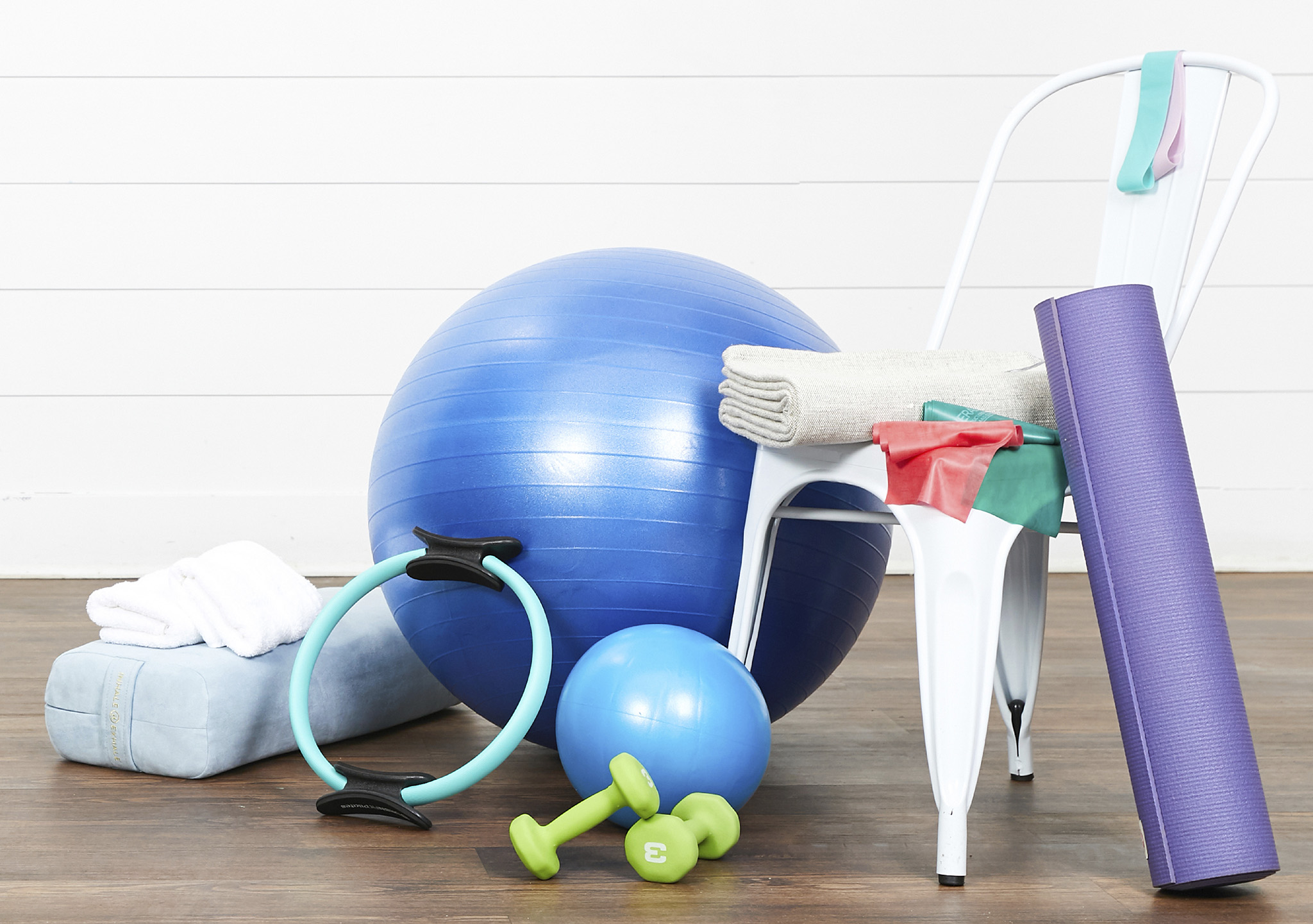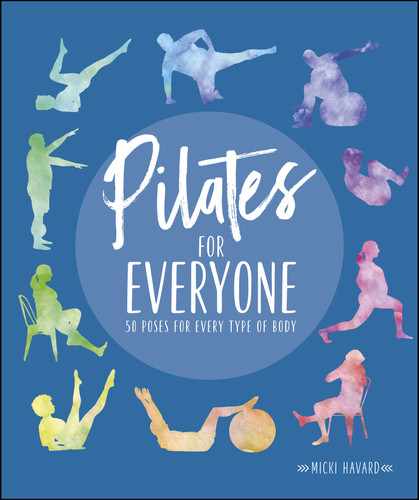WHAT YOU NEED TO PRACTICE PILATES
The great thing about Pilates is all you need is a small space and a willingness to practice. Although you don’t need any equipment for your practice, having a mat and wearing fitness clothing can make it more comfortable. Adding Pilates props can enhance your workout by engaging specific muscles, helping with alignment, assisting with modifications, and adapting reformer moves to the mat.
Mat
For Pilates, a thicker mat usually works best. Unlike a yoga mat (which is thinner so you can balance properly), a Pilates mat is ¼ to ½ inch (0.5 to 1.25 centimeters) thick and made with dense compact foam to provide more support for your spine, wrist, hips, etc., as well as help you stay firm on the floor.
Magic Circle
The Magic Circle was originally created by Joseph Pilates from the metal ring around a beer barrel and two wooden blocks connected to the sides. Today’s version is flexible metal or rubber, is about 13 inches (33 centimeters) in diameter, and has small pads on both sides. It has seemingly endless uses: creating stability, assisting with alignment, providing the body with feedback as to which muscles it’s targeting, and increasing flexibility.
Resistance Band
Resistance bands are affordable, portable, and adaptable. They can provide support during stability moves. Training with resistance bands provides similar muscle activity as weight training and produces less force on the joints. They’re helpful when used in stretching and mobility training. Resistance bands are often used during physical therapy rehabilitation sessions to improve mobility, strengthen and lengthen muscles, and increase range of motion.
Loop Band
Like resistance bands, loop bands are affordable, portable, and useful for a large number of exercises. They’re available in varying levels of resistance and provide options to adjust your workouts according to your fitness level and goals. Loop bands are excellent for warming up, targeting smaller muscle groups, and adapting reformer exercises to mat exercises. They’re often used in lower-body exercises that target the gluteal, hip, and leg muscles. Whether you’re a beginner or advanced athlete, these bands offer customizable levels of resistance, making them suitable for everyone.
Pilates Small Ball
Also known as the Overball, the Pilates small ball is an inflated soft ball that’s very common in the Pilates studio. It’s a very versatile prop, often used to increase the intensity of a workout. Placing the ball between the ankles, hands, or inner thighs aids in engagement of the surrounding muscles. It creates good alignment and can be used to modify exercises by adding support when placed on your back or side. The Pilates small ball is especially helpful for pregnant people. You can place the ball behind your middle back to avoid lying flat on your back for an extended period of time.
Stability Ball
A stability ball is known by many names: balance ball, Swiss ball, fit ball, physio ball, and exercise ball. It’s a large inflated vinyl ball that comes in different sizes: 22 inches (55 centimeters), 26 inches (65 centimeters), and 30 inches (75 centimeters). These sizes indicate the diameter of the ball when fully inflated. The ball sizes are designed to ensure body alignment for specific body heights. (See the chart at right.) You can use a stability ball to stretch and warm up your muscles before your workout. It can also improve your mobility, flexibility, balance, and core strength. A stability ball is very useful if you have back problems because it supports your lower back when you stretch and exercise. To that end, the support can help with alignment and act as a weight when executing Pilates exercises.
Light Hand Weights
Using light hand weights (1 to 3 pounds [450 grams to 1.4 kilograms]) can encourage extra stability work for your shoulders, core, and pelvis. Adding weight to exercises can also increase the amount of energy used (which will increase the number of calories burned), help you build bone mineral density, and tone muscles. Light weights are traditionally used for the Pilates arm series and you can do many reformer exercises on the mat using hand weights.
Chapter 1:Pilates Facts | WHAT YOU NEED TO PRACTICE PILATES
| YOUR HEIGHT | BALL SIZE |
| 5’0’’ to 5’5’’ | SMALL: 22 INCHES (55 CENTIMETERS) |
| 5’6’’ to 5’11’’ | MEDIUM: 26 INCHES (65 CENTIMETERS) |
| 6’0’’ to 6’3’’ | LARGE: 30 INCHES (75 CENTIMETERS) |

